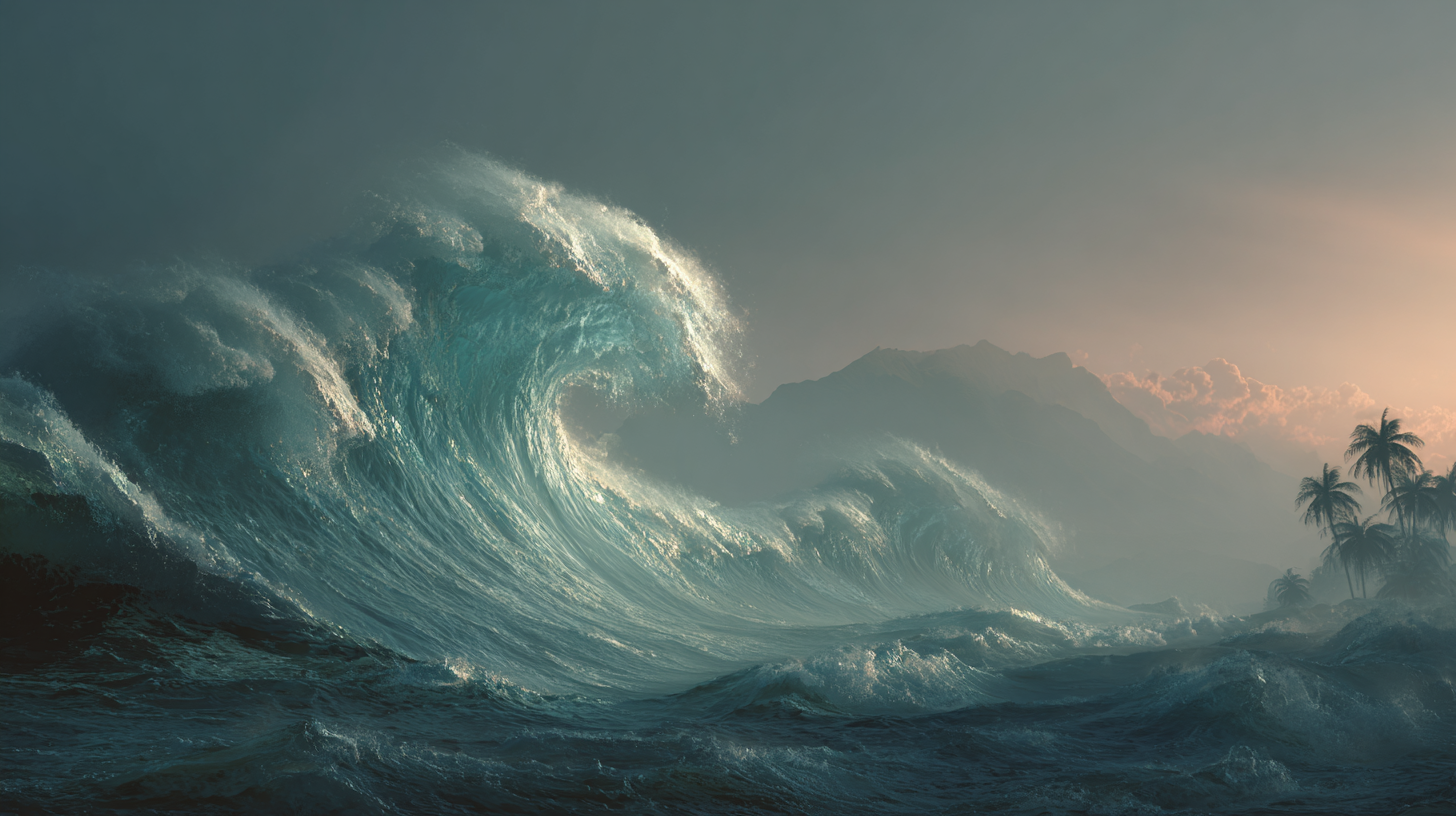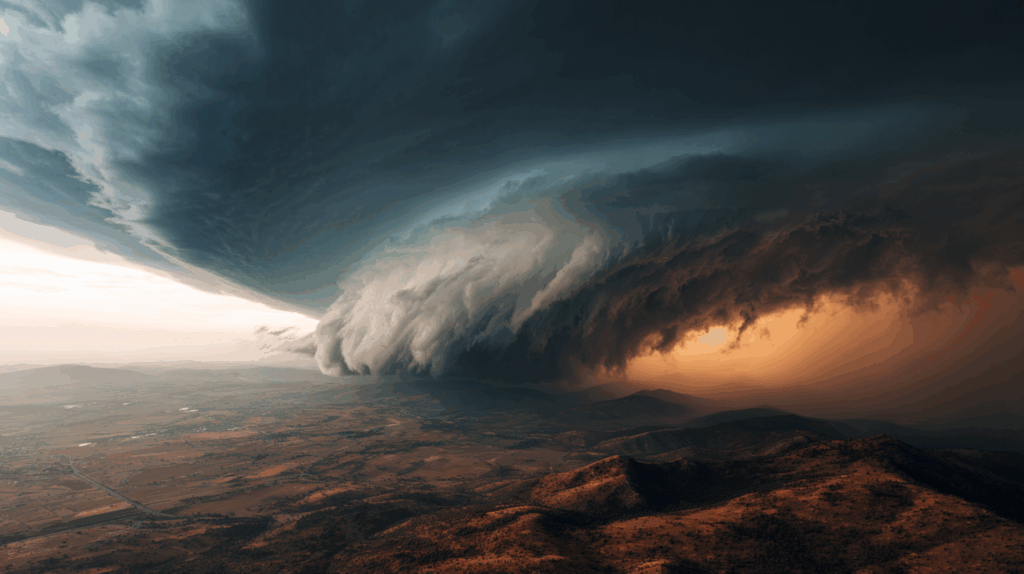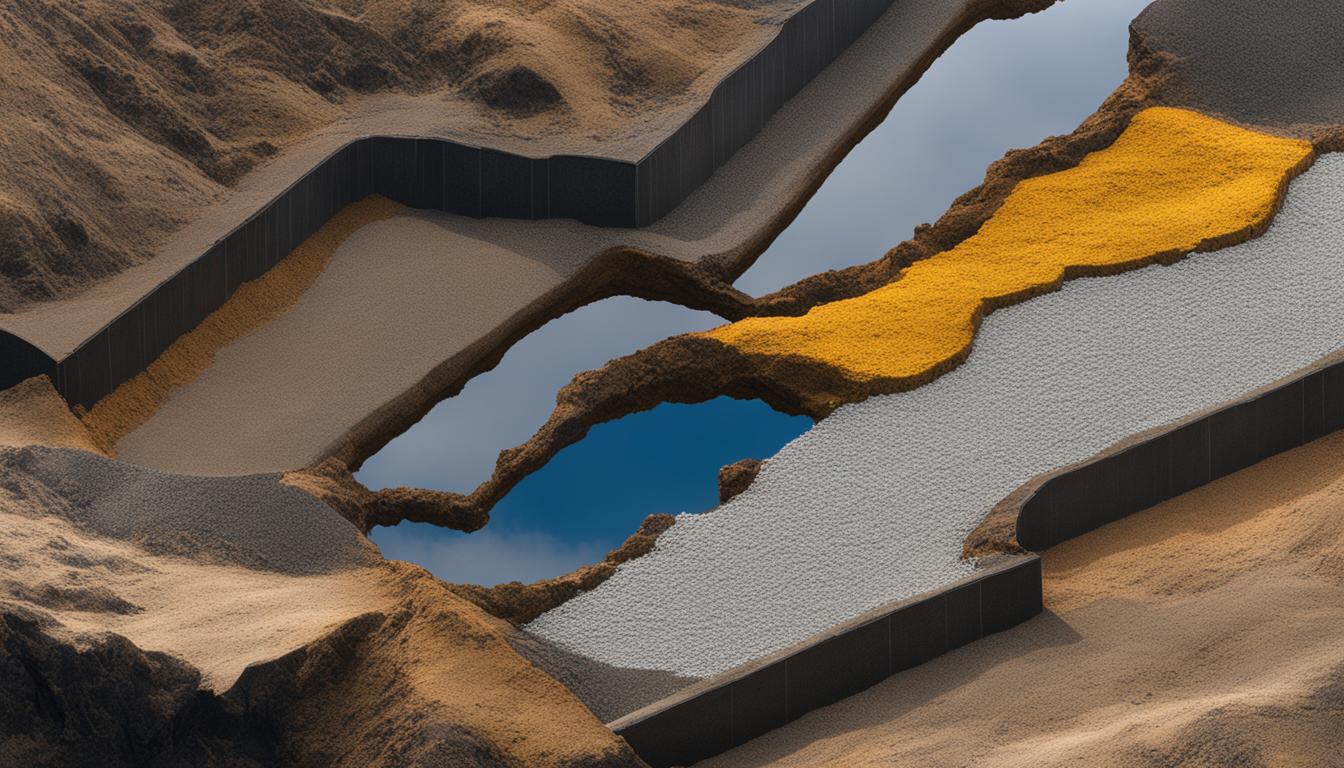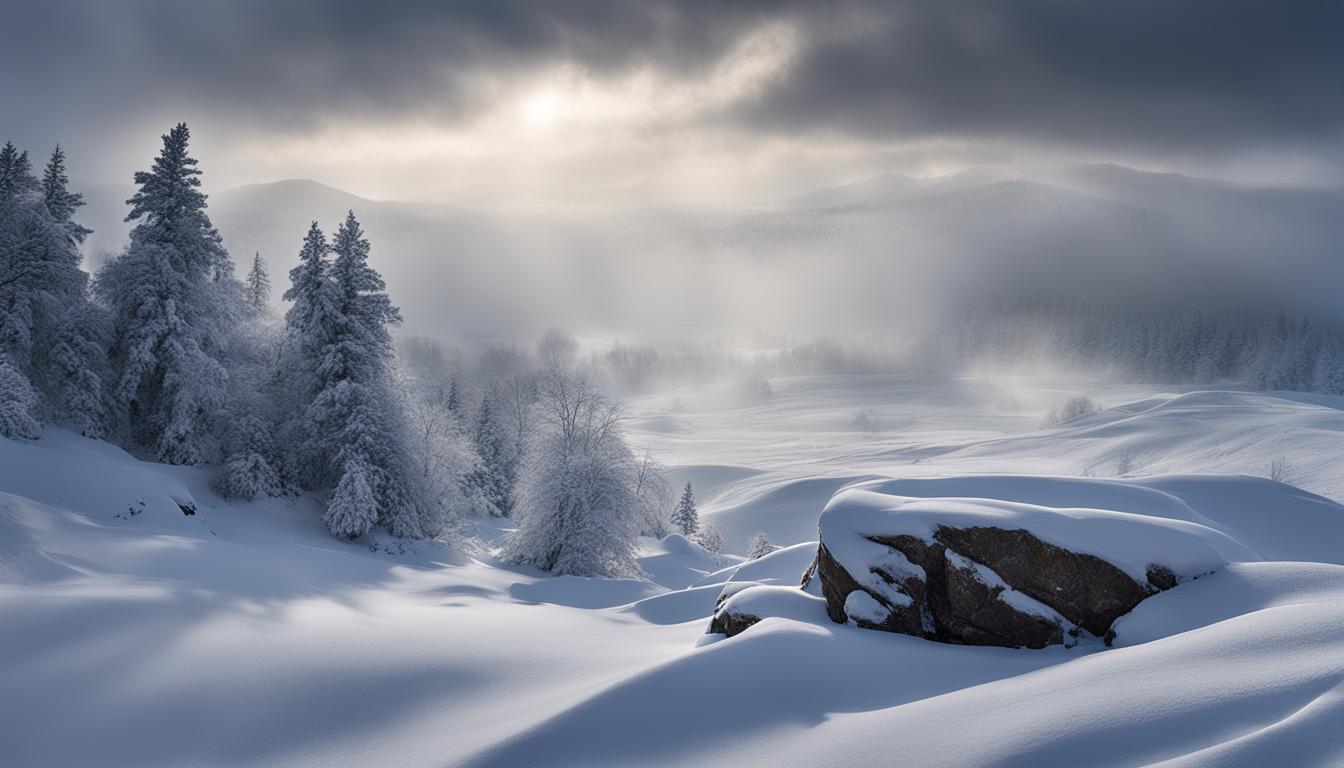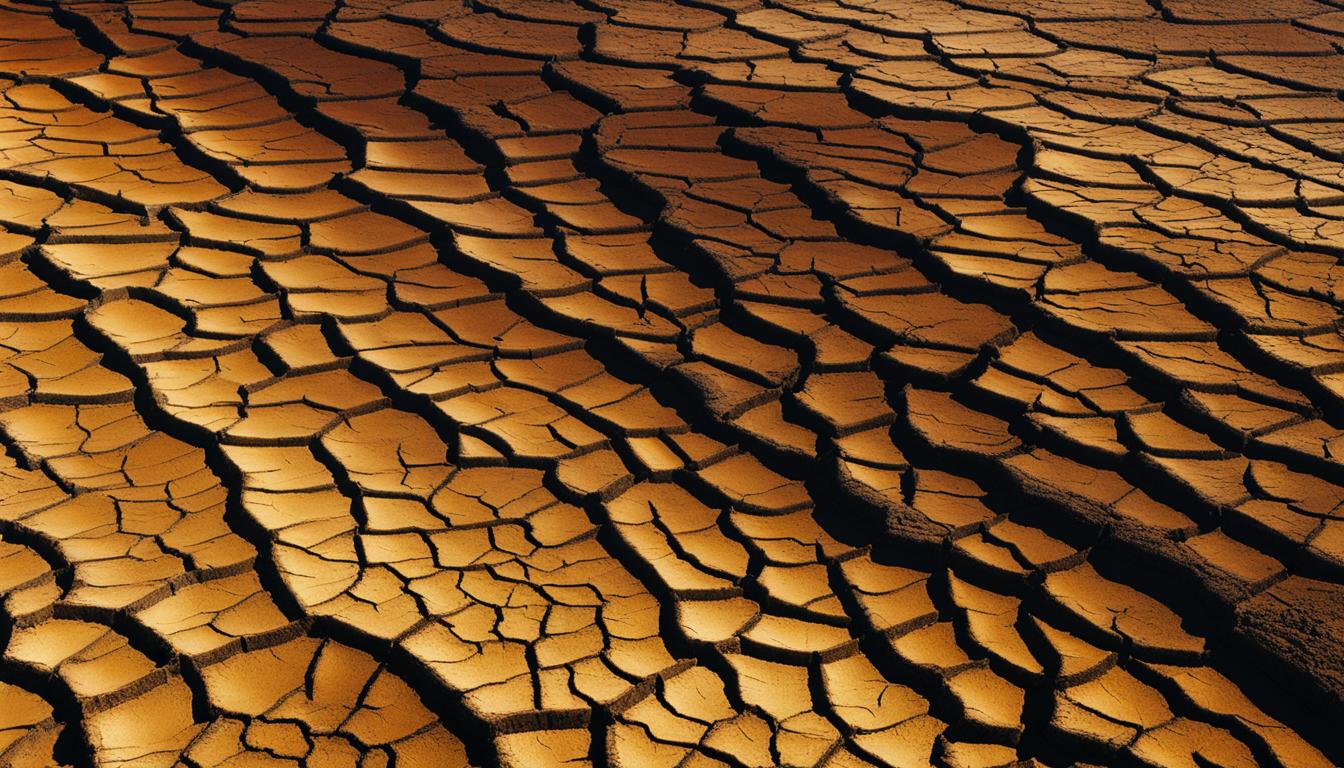Natural disasters can be devastating, and understanding the differences between various types of disasters is crucial for preparedness and mitigation.
Cyclones and tsunamis are two such disasters that can have catastrophic effects. While both can cause widespread destruction, they are distinct phenomena with different causes and characteristics. A cyclone is a powerful storm system that forms over the ocean, characterized by strong winds and heavy rainfall. On the other hand, a tsunami is a series of ocean waves caused by the displacement of a large volume of water, often as a result of an earthquake or landslide.
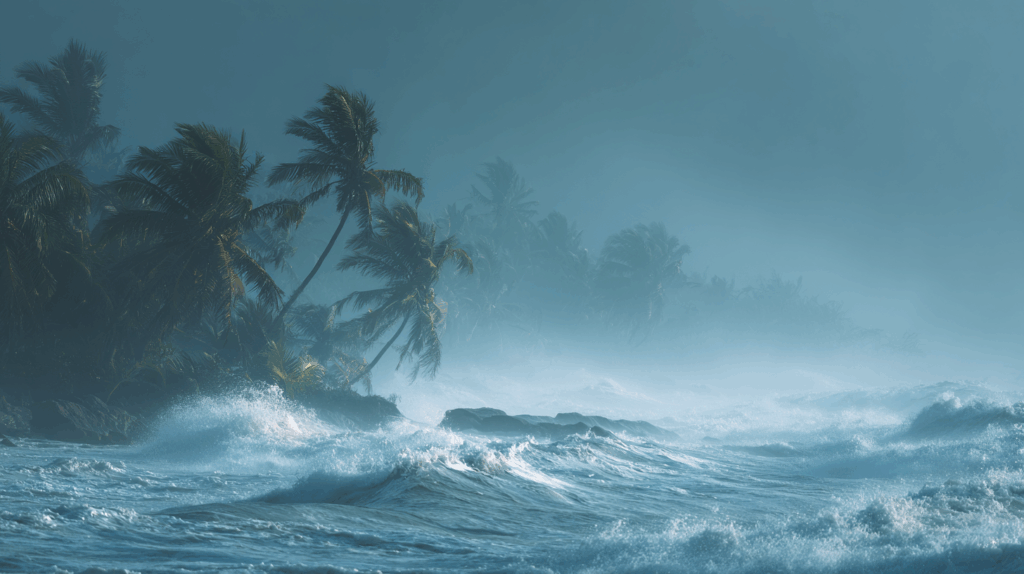
Key Takeaways
- Understanding the difference between cyclones and tsunamis is vital for disaster preparedness.
- Cyclones are powerful storm systems with strong winds and heavy rainfall.
- Tsunamis are series of ocean waves caused by the displacement of a large volume of water.
- Both cyclones and tsunamis can cause widespread destruction.
- Knowing the characteristics of each disaster can help in mitigation efforts.
Understanding Natural Disasters
With the rise of extreme weather, the need to understand and differentiate between natural disasters like cyclones and tsunamis has never been more pressing. The world is witnessing an increase in extreme weather events, making it crucial to comprehend the differences between various catastrophic events.
The Growing Threat of Extreme Weather Events
Extreme weather events are becoming more frequent and intense. This surge is attributed to various factors, including climate change.
| Extreme Weather Event | Characteristics | Impact |
|---|---|---|
| Cyclones | Strong winds, heavy rainfall | Widespread destruction, flooding |
| Tsunamis | Large ocean waves | Coastal destruction, loss of life |
Why Distinguishing Between Disasters Saves Lives
Understanding the differences between cyclones and tsunamis is vital for preparedness and response. Distinguishing between these disasters can save lives and reduce damage.
What Is a Cyclone?
A cyclone is a complex weather phenomenon characterized by rotating winds. It is a type of low-pressure system that forms over warm ocean waters, typically within 20° of the equator.
Definition and Atmospheric Formation Process
Cyclones form when a combination of atmospheric and oceanic conditions come together, including warm sea surface temperatures, low atmospheric pressure, and pre-existing weather disturbances. As the air rises, it creates a low-pressure area near the surface, which pulls in more air that then spirals upward, forming a rotating system.
“Cyclones are among the most destructive weather phenomena on Earth, causing widespread damage and loss of life.”
Types of Cyclones: Tropical, Subtropical, and Extratropical
There are three main types of cyclones: tropical, subtropical, and extratropical. Tropical cyclones form over warm ocean waters and are characterized by strong winds and heavy rainfall. Subtropical cyclones have characteristics of both tropical and extratropical cyclones, while extratropical cyclones form outside the tropics and are often associated with cold fronts.
Cyclone Seasons and High-Risk Regions
Cyclone seasons vary depending on the region. In the Atlantic, the official hurricane season is from June 1 to November 30. Areas prone to cyclones include coastal regions in the tropics and subtropics, such as the southeastern United States, the Caribbean, and parts of Asia.
Notable U.S. Cyclones and Their Impact
The United States has experienced several devastating cyclones throughout its history. One notable example is Hurricane Katrina, which made landfall in Louisiana in 2005, causing catastrophic damage and loss of life. The economic impact was significant, with estimated damages of over $160 billion.
| Cyclone Name | Year | Damage (Billions) |
|---|---|---|
| Hurricane Katrina | 2005 | $160 |
| Hurricane Harvey | 2017 | $125 |
| Hurricane Maria | 2017 | $90 |
What Is a Tsunami?
A tsunami is a complex and powerful ocean phenomenon that can have catastrophic consequences. It is characterized by a series of ocean waves that are caused by the displacement of a large volume of water, usually as a result of an underwater earthquake or landslide.
Definition and Underwater Formation Mechanics
Tsunamis are formed when a significant amount of water is displaced, creating a series of waves that can travel at speeds of up to 500 miles per hour. The displacement can be caused by various factors, including earthquakes, landslides, or volcanic eruptions. As the tsunami waves approach the coastline, their speed decreases, but their height increases, leading to potentially devastating effects.
Triggering Events: Earthquakes, Landslides, and Volcanic Activity
The most common triggering events for tsunamis are underwater earthquakes and landslides. When an earthquake occurs beneath the ocean, it can displace the water above it, generating tsunami waves. Similarly, landslides, either above or below the water, can also displace water and trigger a tsunami.
Tsunami-Prone Coastlines Around the World
Certain coastlines around the world are more prone to tsunamis due to their geographical location. The Pacific Ocean is often referred to as the “Ring of Fire” due to its high volcanic and seismic activity, making the surrounding coastlines more susceptible to tsunamis.
Historical Tsunamis That Affected the United States
The United States has experienced several significant tsunamis throughout its history. One of the most notable was the 1964 Alaska earthquake-triggered tsunami, which caused widespread damage and loss of life along the Alaskan coast and beyond.
The Key Difference Between Cyclone and Tsunami
Understanding the differences between cyclones and tsunamis is crucial for predicting their effects and saving lives. While both are powerful natural disasters, they have distinct characteristics that set them apart.
Origin: Atmospheric vs. Seismic/Underwater
Cyclones originate from atmospheric disturbances, forming over warm ocean waters when the sea surface temperature is at least 26.5°C. This process involves a complex interplay of wind, moisture, and temperature gradients. In contrast, tsunamis are generated by seismic or underwater events such as earthquakes, landslides, or volcanic eruptions that displace large volumes of water.
Cyclones are atmospheric phenomena, while tsunamis are oceanic events triggered by geological activities. This fundamental difference in origin influences their behavior and impact.
Physical Characteristics and Behavior Patterns
Cyclones are characterized by strong rotating winds that can cause storm surges, heavy rainfall, and widespread destruction. Tsunamis, on the other hand, involve a series of ocean waves that can travel at speeds of up to 500 miles per hour, causing coastal flooding and damage when they reach land.
- Cyclones: Rotating winds, storm surges, heavy rainfall
- Tsunamis: High-speed ocean waves, coastal flooding
Warning Systems and Detection Technologies
Advanced warning systems are in place for both cyclones and tsunamis, leveraging satellite imagery, radar, and seismic monitoring. For cyclones, predicting the storm’s path and intensity is crucial, while for tsunamis, detecting the initial seismic event and modeling the wave propagation is key.
“The key to saving lives lies in the effectiveness of our warning systems and the preparedness of the communities at risk.” – Dr. Jane Smith, Disaster Research Expert
Timeframes: Development, Duration, and Aftermath
Cyclones can develop over several days, with their impact felt over a few hours to a couple of days. Tsunamis, however, can strike with little warning, often within minutes to hours after the triggering event, and their impact is usually shorter-lived but more intense.
In conclusion, while both cyclones and tsunamis are formidable natural disasters, their differences in origin, characteristics, and impact necessitate distinct approaches to prediction, warning, and mitigation.
Comparing the Destructive Impact
Understanding the destructive power of natural disasters is crucial, especially when comparing cyclones and tsunamis. Both phenomena can have devastating effects on communities and the environment, but their impact differs in several key ways.
Cyclone Damage: Wind, Rain, and Storm Surge
Cyclones bring powerful winds that can destroy buildings, uproot trees, and disrupt power lines. The heavy rainfall associated with cyclones can lead to flooding, landslides, and further damage to infrastructure. Additionally, the storm surge caused by cyclones can inundate coastal areas, causing widespread destruction.
- Wind Damage: Cyclonic winds can reach speeds of over 150 mph, causing catastrophic damage to structures.
- Rainfall and Flooding: Heavy rainfall can overwhelm drainage systems, leading to severe flooding.
- Storm Surge: The rise in sea level due to the cyclone can cause coastal flooding and erosion.
Tsunami Destruction: Wave Force and Inland Flooding
Tsunamis, on the other hand, are characterized by massive waves that can travel at speeds of up to 500 miles per hour. When these waves reach the shore, they can cause widespread destruction, flooding coastal areas and traveling far inland. The sheer force of the water can demolish buildings, sweep away vehicles, and uproot trees.
Economic and Environmental Consequences
Both cyclones and tsunamis have significant economic and environmental impacts. The destruction caused by these disasters can lead to costly repairs, loss of infrastructure, and long-term environmental damage.
The economic consequences include loss of property, infrastructure damage, and disruption of businesses. Environmentally, these disasters can lead to loss of biodiversity, soil erosion, and water pollution.
Recovery Challenges: Similarities and Differences
Recovery from both cyclones and tsunamis poses significant challenges. While both require immediate response and long-term rebuilding efforts, the nature of the destruction differs. Cyclones often leave a trail of debris and infrastructure damage, whereas tsunamis can leave large areas inundated with water and debris.
- Immediate response efforts focus on search and rescue, providing aid, and restoring basic services.
- Long-term recovery involves rebuilding infrastructure, restoring ecosystems, and revitalizing local economies.
Climate Change and Future Patterns
As the planet continues to warm, the patterns of extreme weather events are shifting in ways that could have significant implications for communities worldwide. This change is particularly relevant when discussing cyclones and tsunamis, two of the most destructive natural disasters.
Impact on Cyclone Frequency and Intensity
Global warming is affecting cyclones in several ways. Rising sea surface temperatures can lead to more intense cyclones. Additionally, changes in atmospheric conditions can influence cyclone frequency and tracks.
- Increased Intensity: Warmer oceans can fuel more powerful cyclones.
- Altered Tracks: Changes in atmospheric circulation patterns can shift where cyclones are likely to occur.
Climate Change and Tsunami Risk
While tsunamis are primarily triggered by seismic activity, climate change can indirectly affect tsunami risk. For instance, rising sea levels can make coastal areas more vulnerable to tsunami waves.
Preparing for the Future
To prepare for these changing patterns, communities in cyclone and tsunami-prone areas must adopt robust early warning systems and resilient infrastructure. This includes:
- Investing in climate-resilient construction
- Enhancing early warning systems for both cyclones and tsunamis
- Developing community preparedness plans
Conclusion
Understanding the difference between cyclone and tsunami is crucial for mitigating the impact of these natural disasters. Cyclones, with their powerful winds and storm surges, require a different set of preparedness measures compared to tsunamis, which bring massive waves and inland flooding.
A cyclone and tsunami comparison highlights the distinct origins, characteristics, and warning systems for these events. By recognizing these differences, communities in high-risk regions can better prepare and respond to these threats.
As the world grapples with the challenges of climate change, understanding the evolving patterns of cyclones and tsunamis becomes increasingly important. By staying informed and adopting proactive measures, we can reduce the risk and impact of these disasters.
The key to a safer tomorrow lies in our ability to distinguish between these phenomena and respond accordingly. By doing so, we can protect lives, infrastructure, and the environment, ultimately building more resilient communities.
FAQ
What is the main difference between a cyclone and a tsunami?
The primary difference lies in their origins and characteristics. A cyclone is a rotating low-pressure weather system that forms over warm ocean waters, whereas a tsunami is a series of ocean waves caused by the displacement of a large volume of water, usually as a result of an earthquake or landslide.
Can cyclones trigger tsunamis?
No, cyclones and tsunamis are distinct natural disasters with different causes. While cyclones are atmospheric phenomena, tsunamis are typically triggered by seismic or underwater events. However, it’s worth noting that cyclones can cause storm surges, which are different from tsunamis.
How do warning systems differ for cyclones and tsunamis?
Cyclone warning systems rely on meteorological data and forecasting, whereas tsunami warning systems depend on seismic monitoring and ocean buoys that detect changes in ocean depth. Both systems aim to provide early warnings to affected communities.
Are cyclones and tsunamis equally destructive?
Both can be devastating, but in different ways. Cyclones cause damage through strong winds, heavy rainfall, and storm surges, while tsunamis result in widespread destruction due to powerful waves and inland flooding. The impact of each disaster depends on various factors, including the affected region’s preparedness and infrastructure.
How does climate change affect the frequency and intensity of cyclones and tsunamis?
Climate change is believed to influence cyclone frequency and intensity, with warmer ocean temperatures potentially leading to more intense storms. Tsunami risk factors, on the other hand, are not directly linked to climate change, although sea-level rise may exacerbate coastal flooding and erosion.
What are some common cyclone and tsunami characteristics?
Both cyclones and tsunamis can cause catastrophic damage and loss of life. They also share some similarities in terms of warning signs, such as changes in weather patterns or ocean behavior. Understanding these characteristics is crucial for developing effective disaster preparedness and response strategies.
How can communities prepare for cyclones and tsunamis?
Preparation is key to minimizing the impact of these disasters. Communities can develop evacuation plans, conduct regular drills, and invest in early warning systems. Staying informed about weather conditions and tsunami risk can also help save lives.
 Skip to main content
Skip to main content